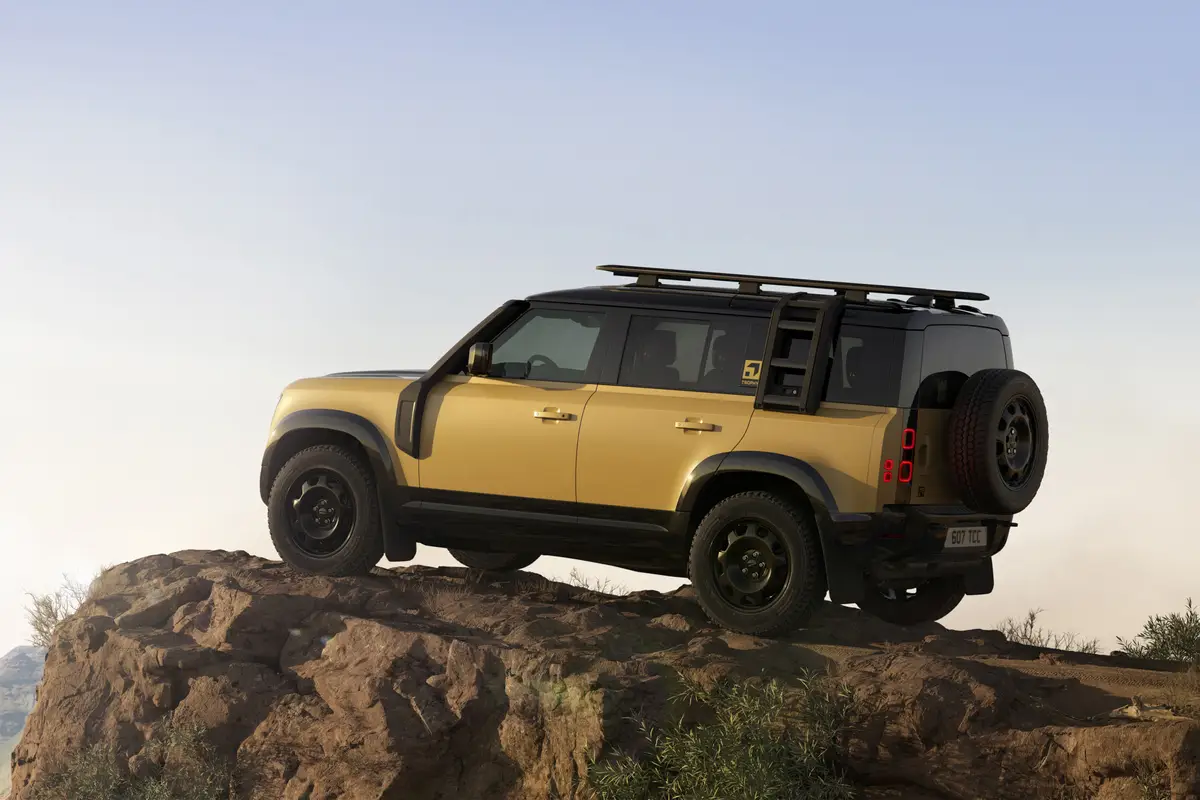AZCentral.com's view
Pleasant surprises arrive in all shapes and sizes. And sometimes it’s true that good things come in small packages.
I just hope nobody takes offense when I say:
Despite its weird name, the 1999 Grand Vitara is such a good-looking, nice-driving vehicle, it’s hard to believe that Suzuki builds it.
As a motorcycle builder, Suzuki earns top marks, especially for its hyper sport bikes. But as an automaker, Suzuki’s record has been spotty, offering little more than basic transportation at a budget price.
From the much-maligned Samurai to the diminutive Swift, Suzuki has fallen consistently into the lower tier of Japanese automakers. Granted, the motorcycle champ came onto the automotive field late in the game, but it still rates consistently behind such stalwarts as Toyota and Honda.
The V-6-powered Grand Vitara could be the start of a whole new role for Suzuki. With a new body and chassis, it’s so much better than Suzuki’s last subcompact sport-utility vehicle, the boxy Sidekick, that it ascends to a new category. Now, it’s no longer a budget compromise but a desirable sport ute in its own right.
Really, the only thing held over is the reasonable price tag, competing well against Toyota and Honda.
There’s nothing tinny about the Grand Vitara, unlike Suzukis of the past. Doors close with a solid thunk, and the interior feels roomy and well-finished, not at all spartan or cheaply made.
Grand Vitara is powered by a V-6 engine that performs quietly, smoothly and strongly. The demi-truck also steers and handles nicely. It’s equipped with a rugged, trucklike four-wheel-drive system for fairly serious off-road excursions.
Along with the new Vitara comes a new Tracker for Chevrolet, also much improved. The body and underpinnings are pretty much identical, except the Tracker doesn’t get all the stylish plastic body cladding of the Grand Vitara. It looks better without it.
Also, the Tracker doesn’t receive the benefit of the V-6 until next year, apparently so that Suzuki can reap the benefit of the upgrade without competition from its stronger partner. A recent road test of the four-cylinder Tracker found it to be eager, fun to drive and a giant step up from the previous version.
The four-cylinder is not as strong, smooth or quiet as the V-6, but it’s not bad, either. It cruises well at highway speeds, and accelerates well, at least with the five-speed stick shift of our tester.
The V-6 engine, though, really transforms the Grand Vitara, making it seem more substantial and generally quieter, especially on the freeway. Acceleration is strong but not too brisk, with a feeling of torque, like a truck, rather than horsepower, like a car.
But let’s get down to brass tacks here: Grand Vitara is a ridiculous name that sounds more like a lodge leader than a sport ute. Really, what were they thinking? After such cool names as Samurai and Sidekick (for fairly mundane vehicles), whoever thought that a name like Gra nd Vitara would help attract people to buy Suzukis?
Not me.
Suzuki started the whole genre of mini-sport-utility vehicle, with the teeny Samurai, which received a nasty reputation for flipping over, followed by the better-designed Sidekick, which became the double for the Chevrolet Tracker. Korean automaker Kia followed suit with its attractive but limited Sportage.
Then along came Toyota and Honda, which moved up the bar considerably with their well-turned-out mini-utes, the RAV4 and CRV, respectively. And Subaru, champion of all-wheel-drive cars, came up with its Forester model, which is really a trucklike body on the subcompact Impreza automobile.
Now, it looks like Suzuki (and Chevy) have something to offer that rivals RAV4 and CRV, and in some respects, tops them. Especially with price tags starting under $16,000.
The V-6 is a major boost, though Honda plans to offer one soon in the popular CRV. The other is Grand Vitara/Tracker’s full-fledged four -wheel-drive system, a rugged Jeep-like system with low range for tackling the tough stuff. Toyota and Honda make do with carlike all-wheel-drive systems that are limited in off-highway usefulness.
In an afternoon’s four-wheeling with the Grand Vitara – nothing terribly challenging, mostly rocky trails with a few stints in high-range four-wheel drive – the Suzuki was well-controlled and comfortable, in spite of small dimensions.
The ride was firm and rattle-free, handling well on the switchbacks and easily controlled on loose surfaces. And the ride on pavement is also firm but compliant, exhibiting none of the stiff, rough-ride behavior of some sport utes.
The only real complaint about the Vitara/Tracker is its small size, which limits legroom in the back seat and keeps cargo to the minimum. The driver and front-seat rider will find lots of space, however, with plenty of driving comfort for a tall person.
The Vitara and Tracker tested here were both four-door models. Two-door Vitaras and Trackers are built on a shorter wheelbase and have a folding canvas top over the back seat. The two-door gets only the four-cylinder engine.
It’s good to see Suzuki earn a solid hit. At this price, Vitara/Tracker is still a bargain, but also with value beyond the bottom line.
1999 Suzuki Grand Vitara
Vehicle type: Four-passenger, four-door sport-utility vehicle, rear/four-wheel drive. Price as tested: $20,454. Engine: 2.5-liter V-6, 155 horsepower at 6,500 rpm, 160 pound-feet of torque at 4,000 rpm. Transmission: Five-speed stick shift. EPA fuel economy: 19 city, 21 highway. Highs: Smooth power. Total upgrade. Lows: Tight interior. Weird name.
1999 Chevrolet Tracker
Vehicle type: Four-passenger, four-door sport-utility vehicle, rear/four-wheel drive. Price as tested: $19,761. Engine: 2.0-liter in-line 4, 127 horsepower at 6,000 rpm, 134 pound-feet of torque at 3,000 rpm. Transmission: Five-speed stick shift. EPA fuel economy: 19 city, 21 highway. Highs: Budget price. Total upgrade. Lows: Tight interior. No V-6 for ’99.
Latest news



